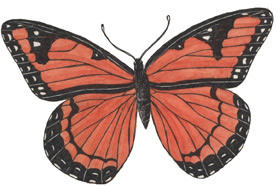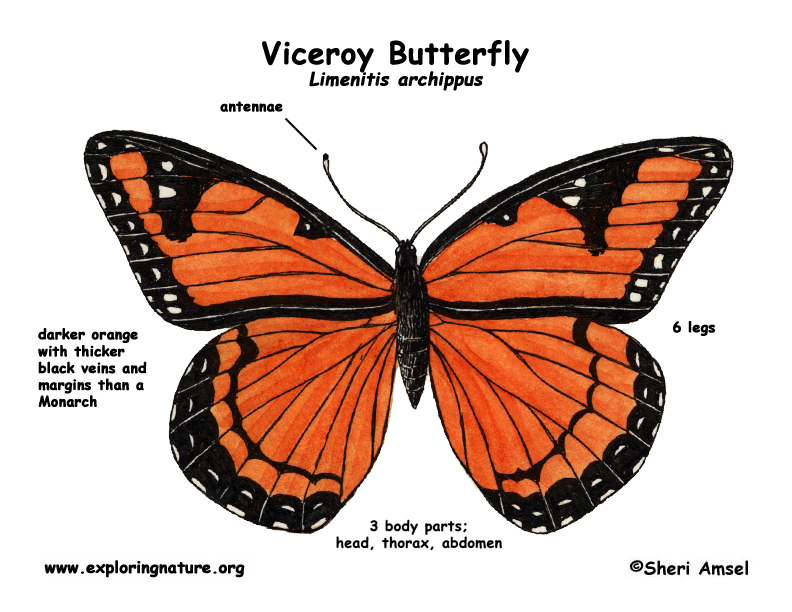

They are found from northern Canada, south throughout the eastern U.S. and in the west in areas in Washington, south through the mountains in California into central Mexico.
They live in marshes, meadows, riversides and along lake shores.
They look like the Monarch butterfly but are darker orange with thicker black veins and margins. They have white spots along the edge of their wings and in the black border. They have a wingspan of up to 3.5".
Young caterpillars make a ball of leaf bits, dung, and silk, which hangs off the leaf on which they are feeding. The dangling mass of caterpillar garbage may distract predators.
The caterpillars eat willow and poplar.
Females lay eggs on the tips of willow and poplar leaves that hatching caterpillars will eat.
Kingdom: Animalia
Phylum: Arthropoda
Class: Insecta
Order: Lepidoptera
Family: Nymphalidae
Genus: Limenitis
Species: L. archippus
When you research information you must cite the reference. Citing for websites is different from citing from books, magazines and periodicals. The style of citing shown here is from the MLA Style Citations (Modern Language Association).
When citing a WEBSITE the general format is as follows.
Author Last Name, First Name(s). "Title: Subtitle of Part of Web Page, if appropriate." Title: Subtitle: Section of Page if appropriate. Sponsoring/Publishing Agency, If Given. Additional significant descriptive information. Date of Electronic Publication or other Date, such as Last Updated. Day Month Year of access < URL >.
Amsel, Sheri. "Butterfly (Viceroy)" Exploring Nature Educational Resource ©2005-2024. December 13, 2024
< http://www.exploringnature.org/db/view/Butterfly-Viceroy >

